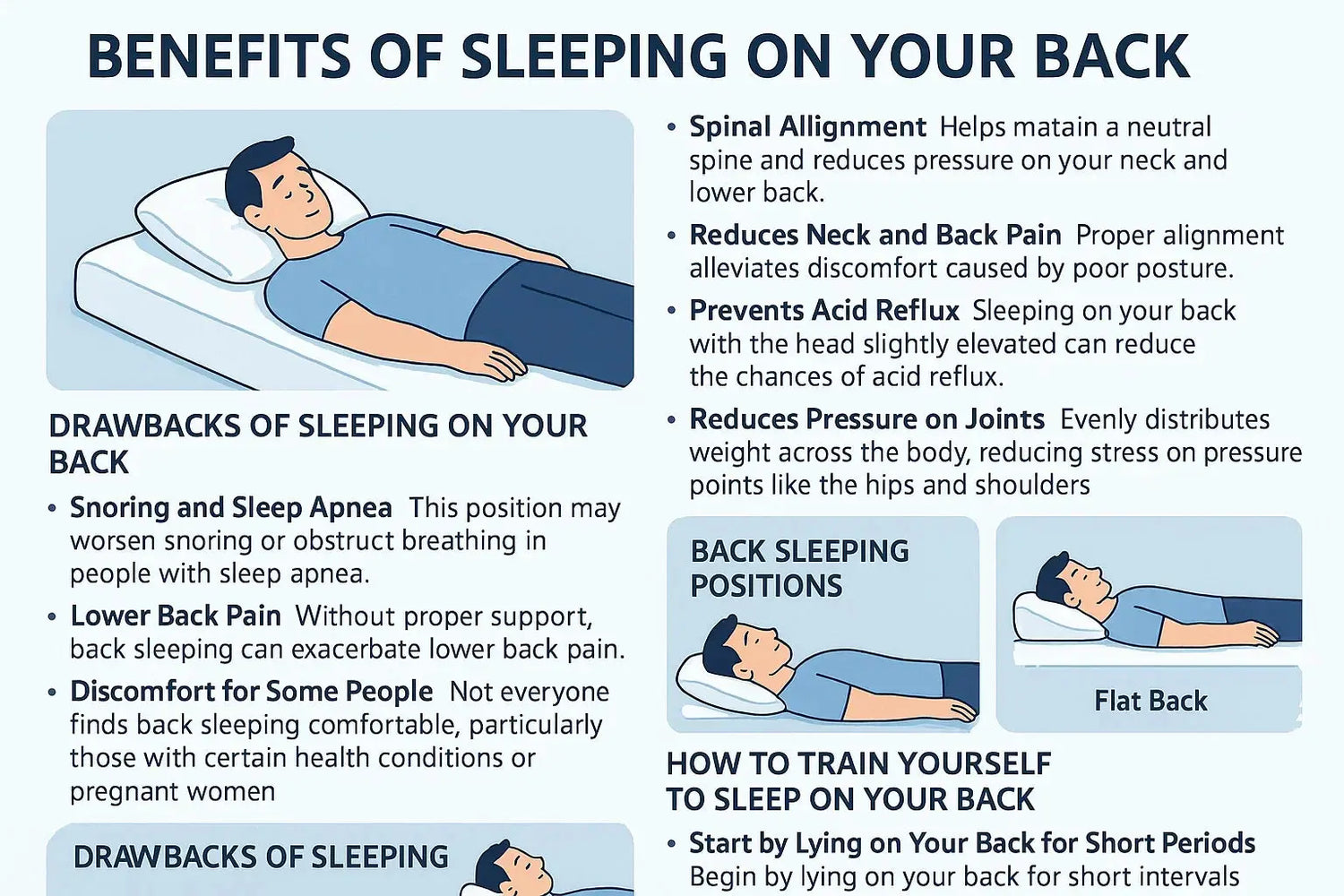
Finding the right sleep position is key to achieving a restful night’s sleep, and back sleeping is often considered one of the healthiest positions for spinal alignment. However, it’s important to know how to properly sleep on your back to avoid discomfort and ensure proper support. In this guide, we’ll explore the benefits and drawbacks of back sleeping, the best positions to try, and tips for training yourself to sleep this way. Additionally, we’ll recommend the best mattresses and pillows to support your back and ensure a comfortable, pain-free sleep experience.
Benefits of Sleeping on Your Back
Sleeping on your back is considered one of the healthiest positions for spinal alignment. It offers the following benefits:
- Spinal Alignment: Helps maintain a neutral spine and reduces pressure on your neck and lower back.
- Reduces Neck and Back Pain: Proper alignment alleviates discomfort caused by poor posture.
- Prevents Acid Reflux: Sleeping on your back with the head slightly elevated can reduce the chances of acid reflux.
- Reduces Pressure on Joints: Evenly distributes weight across the body, reducing stress on pressure points like the hips and shoulders.

Drawbacks of Sleeping on Your Back
While back sleeping has many benefits, it can have a few drawbacks:
- Snoring and Sleep Apnea: This position may worsen snoring or obstruct breathing in people with sleep apnea.
- Lower Back Pain: Without proper support, back sleeping can exacerbate lower back pain.
- Discomfort for Some People: Not everyone finds back sleeping comfortable, particularly those with certain health conditions or pregnant women.
Back Sleeping Positions
To optimize back sleeping, the following positions are recommended:
- Head Elevated: Elevating your head with a pillow can help reduce snoring and improve digestion.
- Flat Back: Sleeping flat on your back with a pillow under your knees can relieve pressure from the lower back and provide better alignment.
How to Train Yourself to Sleep on Your Back
If you're used to sleeping on your side or stomach, transitioning to back sleeping may take time. Here’s how to train yourself:
- Start by Lying on Your Back for Short Periods: Begin by lying on your back for short intervals during the day.
- Use a Pillow Under Your Knees: This helps take pressure off your lower back and makes back sleeping more comfortable.
- Gradually Increase Your Time: Slowly increase the amount of time spent sleeping on your back as your body adapts.
Best Mattresses for Back Sleepers
A mattress that provides proper support is essential for back sleepers. The Anmiz Luna Luxury Hybrid Mattress is an excellent choice, offering spinal support and pressure relief. Its high-density foam and pocket coil system ensure that the spine remains properly aligned while sleeping on your back.
Best Pillows for Back Sleepers
For back sleepers, a medium loft pillow that supports the neck and aligns the spine is crucial. Consider a memory foam or latex pillow for the best results. Anmiz pillows are designed to provide optimal support and comfort for back sleepers.
When to Consider Other Sleep Positions
If back sleeping leads to discomfort, it might be time to consider alternative positions. People with conditions like sleep apnea, snoring, or pregnancy may need to sleep on their side or in a more elevated position to prevent breathing issues or alleviate pressure on the body.
Table: Best Mattresses and Pillows for Back Sleepers
| Product | Key Features | Best For |
| Anmiz Luna Luxury Hybrid Mattress | Gel memory foam, lumbar support, breathable materials | Back sleepers, those needing spinal alignment |
| Anmiz Flow Classic Hybrid Mattress | Medium-firm, breathable foam, pocket coils | Back sleepers, pressure relief |
| Memory Foam Pillow | Medium loft, contours to neck and spine | Back sleepers needing neck support |
| Latex Pillow | Firm, breathable, low loft | Back sleepers needing proper spinal alignment |







